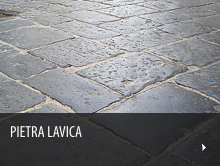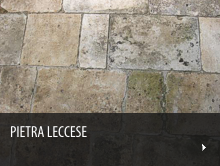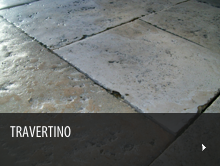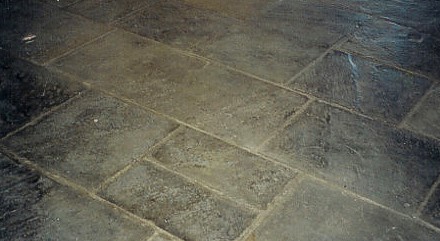






|
SERENA STONE

The serena stone is a kind of gray sandstone used in constructions and, partly, in sculpture. It is extracted in some areas in Tuscany, especially around Florence, although usually it is not used for masonry but only in decorations such as columns, frames and ribs.
Its granulometry is variable, from medium-fine to coarse, depending on the quarry. It has a pleasant, homogeneous texture with glistening dots due to the presence of mica flakes. It sometimes shows laminations and gradations (that is variations in the granulometry in the same block). Occasionally, calcite veins may produce weakness points. The perpendicular tensile strength is not particular high: around 700 kg/cm2.
It can be processed in different ways: chiseled, honed, flamed, bush-hammered, ribbed, sanded.
The two main varieties are the Mt. Modino sandstone, characterized by a medium-fine grain, found in quarries located in Fiesole, Vincigliata, Settignano, Valle del Mugnone and all areas North of Florence, and the Macigno sandstone, with its medium-large grains, common in South-west Florence areas (Gonfolina in the Municipality of Carmignano, Lastra a Signa, Montebuoni, Tavarnuzze at Impruneta, etc.). Besides Florence, it is found on Mt. Orsaro near the Abetone, on Mt. Albano and in the Chianti region as far as Mt. Cetona. Nowadays, almost all the production is concentrated in Firenzuola. An excellent type of Serena stone, similar to the Macigno sandstone, comes from the Tuoro hills on the Trasimeno, where is quarried these days.
Its weak point is poor resistance to atmospheric agents: in the worst cases, it must be replaced after a few decades, but there are exceptions too (like the Uffizi). The degradation is evident from the formation and fall of scabs parallel to the exposed surface (exfoliation), pulverization, breaks, cracks, etc.
Sometimes, the decomposition of chlorites turns the stone into a brownish color, leading to a rapid decomposition due to disintegration.
Giorgio Vasari mentioned this stone in 1568, Filippo Baldinucci in 1681 and Giovanni Targioni Tozzetti in 1773, while Agostino del Riccio used to call it stone from the Fiesole hills and Dante Alighieri called it “macigno� (i.e. big block of rock) (Inf. XV, 63).
Long before, it was used by the Etruscans to build the walls of Fiesole and the Comeana tombs, while the Romans used it for the temple of Mars in Florence. Its triumph though came later on with Filippo Brunelleschi, who used it to build his masterpieces in Florence, such as the Innocents Hospital, the Church of St. Lawrence or the Basilica of the Holy Spirit (just to mention three), enhancing the contrast of the uniform gray of the stone against the buildings blocks and the white plaster covering the walls. Since then, the gray/white motif became a classic in Renaissance architecture; even Michelangelo used it for the Medicean Laurentian Library.
In Florence you can find it also in many exteriors; some examples are given by the Uffizi gallery, the arcades of Piazza Santissima Annunziata or the facade of the Church of San Giovannino degli Scolopi; in the nineteenth century, Giuseppe Poggi used it massively, mostly for ashlars on the facade of buildings.
If the stone has a fine grain, it can be carved: this is why it was used both for architectural decorations and sculptures, as Donatello did with the Marzocco or the Annunciation of Santa Croce in Florence.
It can be used for urban paving too, due to its resistance: Florence, Siena and Arezzo are mainly paved with Serena stone slabs (macigno type). This ancient use is testified by a section of the Cardo Maximus in Florence built in Roman times, emerged in via Vacchereccia and entirely paved with sandstone slabs placed ad opus incertum.

Technical characteristics
- Weight per unit of volume: 2450 kg/m³
- Compression breaking load: 900 kg/cm²
- Flexural strength: 80 kg/cm²
- Abrasion resistance: 0,36 mm
- Moisture absorption (weight): 3,00 %
- Coefficient of thermal expansion: 0,00114 mm/m °C
|


|